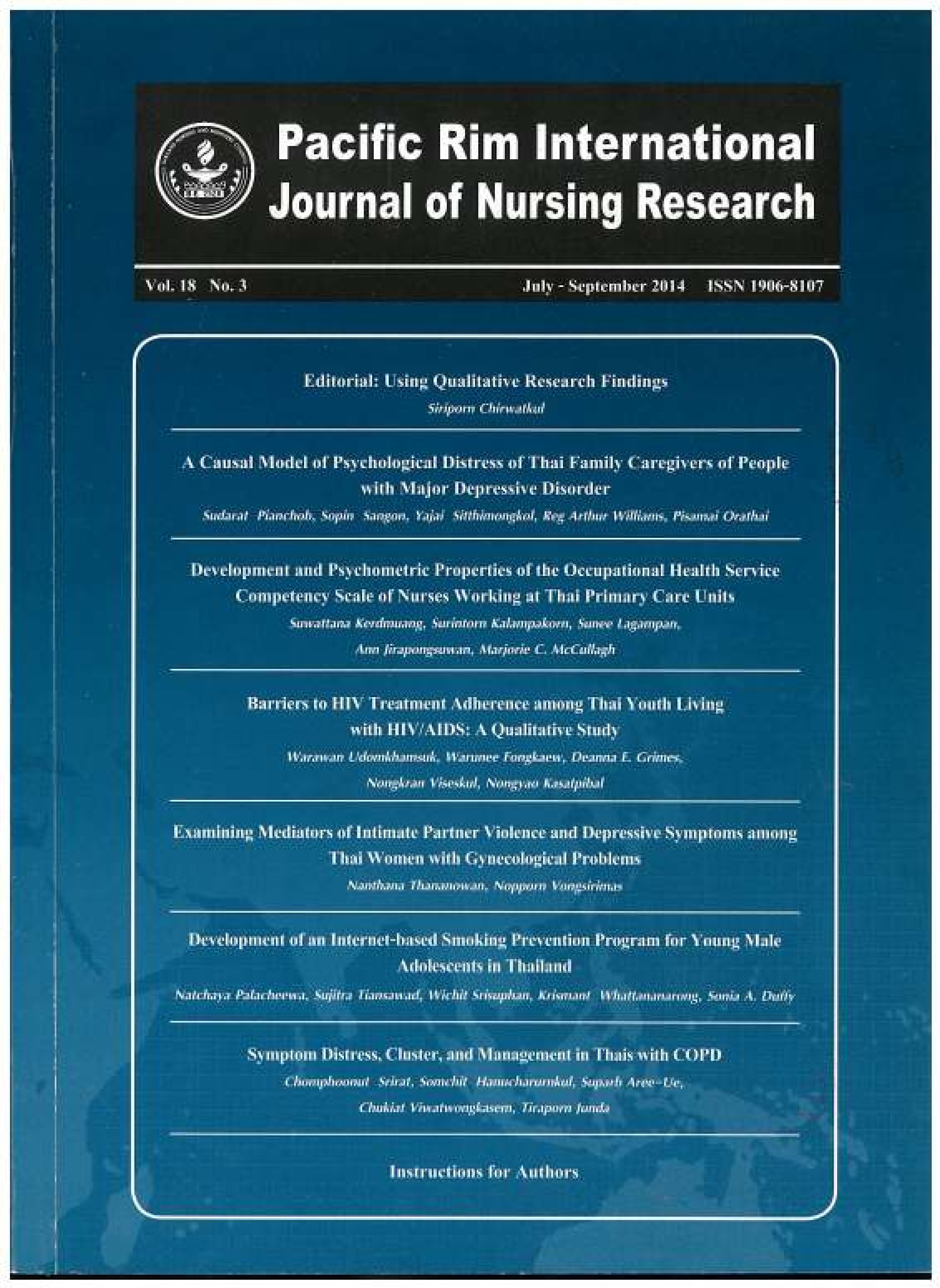Symptom Distress, Cluster, and Management in Thais with COPD
Keywords:
Symptom distress, Symptom cluster, Symptom management strategies, Chronic obstructive pulmonary diseaseAbstract
This study explored symptom distress, symptom cluster and effective symptom management strategies used for each symptom cluster among persons with chronic obstructive pulmonary disease. Thai participants (n=250) with chronic obstructive pulmonary disease were purposively selected to complete three questionnaires: the Personal Information Form, the Bronchitis Emphysema Symptom Checklist, and the Symptom Management Strategies Questionnaire. Descriptive statistics was used to determine symptom distress and effectiveness of management strategies, and a Principal Component Factor with a Varimax rotation was used to analyze cluster.
The results revealed that the participants experienced multiple symptoms. Seven clusters of symptom distress which ran from the highest level of distress were: respiration difficulty, fatigue-related disease, sleep alteration, pain and unpleasant sensation, emotional problems, memory function decline, and respiratory muscle weakness. The most effective strategies used in each cluster were as follows: For respiration difficulty, taking bronchodilator and mucolytic drugs, inhaling corticosteroid, using the pursed lip technique, effective coughing, and deep breathing exercise. For fatigue-related disease, taking a bronchodilator, reducing activities, shortening of distance and general exercise. For sleep alteration, taking alprazolam, listening to songs or music, practicing meditation or praying or performing religious activities, and reading books. For pain and unpleasant sensation, taking non-steroidal inflammatory drugs (NSAID) and paracetamol. For emotional problems, taking amitryptyline, accepting their fate and getting used to symptoms, receiving family support and practicing meditation or praying or performing religious activities.
Our findings suggested that nurses should enhance patients’ various skills, both in adherence to medical regimens and non-pharmacological strategies in managing multiple symptom distress among persons with chronic obstructive pulmonary disease. Further study should address the development and testing of a nursing intervention that combines various strategies for relieving symptom clusters.
Downloads
Published
How to Cite
Issue
Section
License
Copyright: The Pacific Rim International Journal of Nursing Research, Thailand Nursing & Midwifery Council has exclusive rights to publish, reproduce and distribute the manuscript and all contents therein.








.png)



